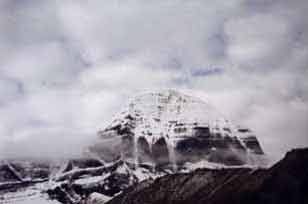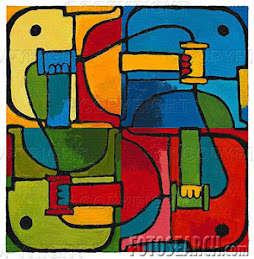From Green To Red Revolution - II
B. Raman, Outlook India
An allegation often levelled by non-governmental analysts of the Maoist (Naxalite) insurgency is that one of the causes for the spread of Maoist influence in the tribal areas of central India is the anger among the members of the depressed classes due to their perception that the law and order machinery is sought to be misused against them when they try to ventilate their grievances against those exploiting them--whether they be rich land-lords, forest contractors, money-lenders or the so-called upper caste Hindus.
According to them, it is this anger, which has over the years driven a large number of tribals into the waiting arms of the Maoists, who have been exploiting their anger for organising a Maoist revolution in the tribal areas, in the hope of thereby achieving political power through the barrel of the gun and not through the ballot box.
In this connection, there are two interesting incidents narrated by Shri K.S.Subramanian, which came to his notice, when he served as Director in the Union ministry of Home Affairs (MHA) between 1980 and 1985.
To quote him:
" A particularly violent series of incidents of agrarian violence occurred in the central Districts of Bihar in the early 1980s, resulting in the killings in police 'encounters' of a number of the rural poor innocents. The Press was full of the details. This led the government of India to set up a central team of officials, including this author (Subramanian) led by the then Member-Secretary, Planning Commission, to visit the state for a first-hand assessment. On arrival in Bihar, the team met the aggressively self-confident District Administration proud of its record of maintaining order at the cost of many innocent lives. It took the District officials a while to come to grips with the fact that the purpose of the team was not to appreciate 'their good work', but to evaluate their success in implementing the declared policies of payment of minimum wages, protection of civil rights, distribution of government waste land among the poor--all impeccably constitutional tasks. The record did not stand up to scrutiny."
"The state police reported the number of deaths in police action as 12 persons, all of them 'Naxalites'. The IB, the main reporting agency of the MHA, repeated the figure. There was a gap between the figures reported in the press and those, which the government departments came up with."
"A meeting was later called in the union home secretary's room to discuss the Bihar situation. The chief secretary of the state frankly admitted that the number of persons killed in the violent incidents was near 60 and that none of them was a 'Naxalite'. Most were members of a local peasant organisation fighting for social justice under the Constitution and other laws of the land. The minutes of this meeting were classified 'Top Secret', since the matter under discussion was 'Naxalite Activities in Bihar', a top secret matter for the IB!"
"In another series of violent incidents in the Dharmapuri district of Tamil Nadu during the same period, which also came up for discussion in the MHA, it was found that most of those similarly killed in police 'encounters' were innocent persons, whose crime had been to demand minimum wages, social dignity and civil rights. The police officer in charge of the district , when confronted with this information, maintained that since the 'Naxalites' did not believe in the Constitution of India, the state police were not obliged to adopt strictly constitutional methods in dealing with them.
He later walked away with a police gallantry medal."
"The MHA, which in words accepted that the social base of the Naxalite movement originated from legitimate rural poor concerns, was, however, ineffective in preventing the misuse of police powers to suppress the so-called Naxalites. It was possible for the ministry to have advised the state governments concerned to deal with the socio-economic issues underlying the movement and address the ideological issues politically. However, the immediate issue became one of law and order."
Subramanian concludes as follows:
"The recent experience of Maoist violence in Chhattisgarh highlights the information gap in the ministry. While the intelligence reports on the situation in the state focus exclusively on the law and order and security angles, the reports emanating from concerned citizens, former civil servants and journalists tell a different tale from the perspective of the victims of violence. The state's response is essentially guided by classified intelligence reports. A more realistic appraisal is possible only if the MHA creates its own sources of information rather than depending exclusively on the reports of the IB."
"Former home secretary Srinivasavaradan (in 1992) had suggested that considering the multiplicity and complexity of the social conflicts emerging in the country and given the inadequacy of the existing information base in the government, the MHA should consider setting up inter-disciplinary study-cum-action groups of scholars, civil servants and social activists to go into conflict situations and produce reports for the government. The priority given to peace and order at the cost of law and justice has led to the re-emergence of a crisis situation in the MHA." The Maoist (Naxalite) movement has two dimensions-- the socio-economic and the internal security.
Both are equally important. Subramanian's book provides a valuable insight into the socio-economic dimension and the inadequacies in addressing it. I will be commenting on the internal security dimension in the next part. To be continued
http://outlookindia.com/full.asp?fodname=20071226&fname=raman&sid=1
skip to main |
skip to sidebar













Don't put the key to your
happiness
in someone else's pocket.
INTERFAITH

Informative Links
Bharat Raagini
Incredible : INDIA
Dil Hai Hindustani
Aana Hai Tou Aa
Jagte Raho
Behti Hai Ganga
Insaaf Ka Mandir
Los Angeles,USA

Sydney, AUSTRALIA

Himalayas, India

Swiss Alps

Eiffel Tower,Paris

Tower Bridge, London

Grand Place, Brussels

SUNRISE

Machu Picchu, PERU

Venice

Modern Art

Pencil sketch

Think about this;
Don't put the key to your
happiness
in someone else's pocket.